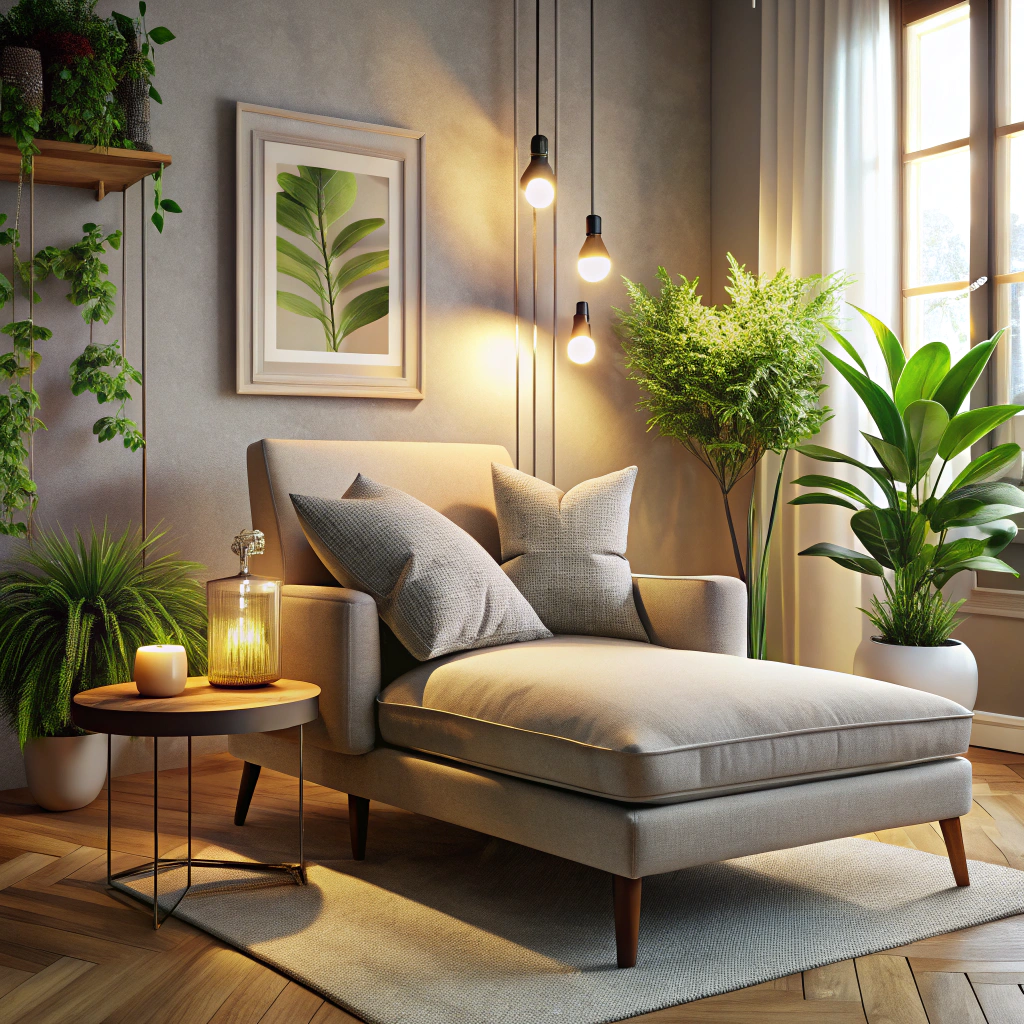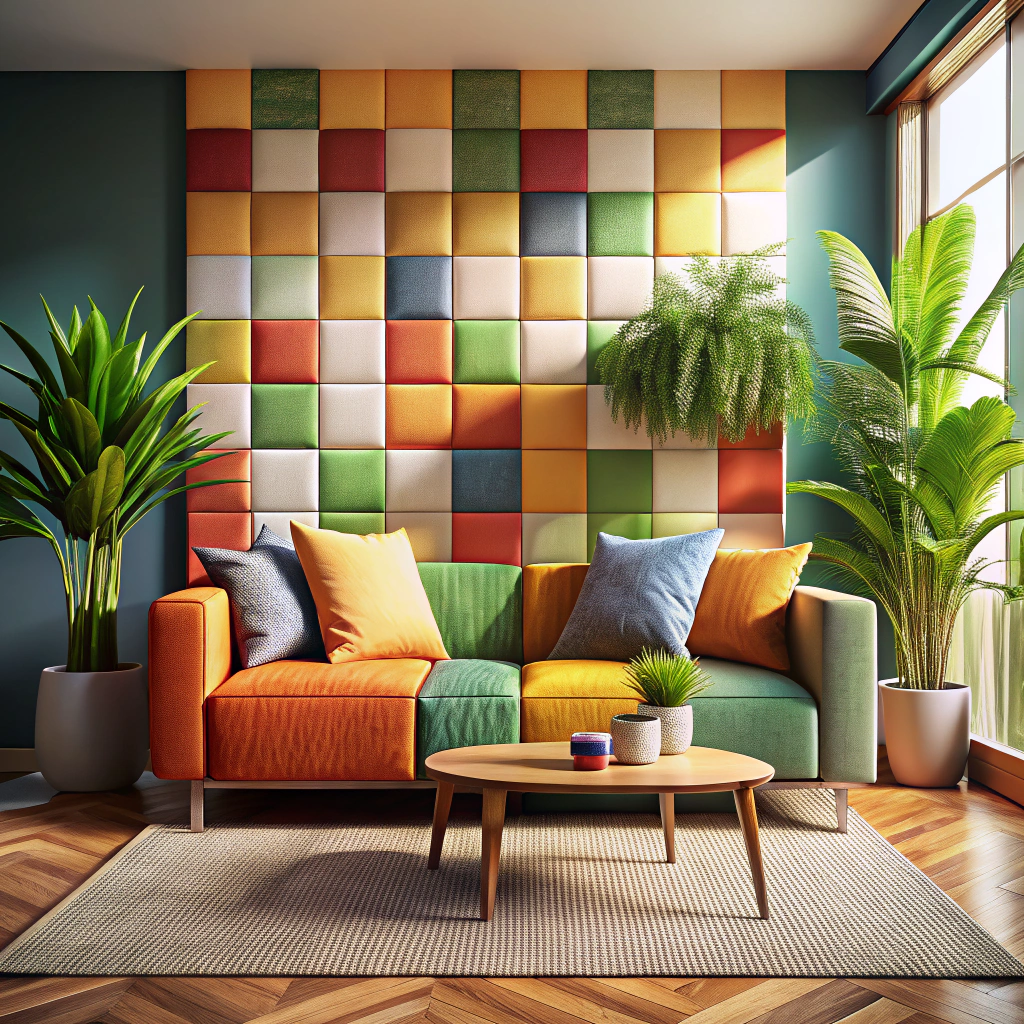Last updated on
Discover the ideal frequency for replacing your couch to maintain comfort, style, and hygiene in your living space.
Your couch is the centerpiece of your living room, and it’s where you spend most of your time relaxing after a long day at work. But have you ever wondered how often you should replace it? It’s not just a matter of aesthetics, but also one of comfort and safety.
An old, worn-out couch can be uncomfortable to sit on and may even pose health risks due to accumulated dust mites and allergens. In this article, we’ll explore the factors that determine when it’s time to bid farewell to your beloved sofa and invest in a new one.
So grab a cup of coffee (or tea) and let’s dive in!
Key takeaways:
- Replace your couch every 7-15 years to maintain comfort
- Signs it’s time to replace: sagging, torn fabric, wobbly frame
- Leather and synthetic fabrics last longer than natural fibers
- Assess cushion lifespan by checking for sagging and lumps
- Consider durability, safety, and cleanliness for pet and kid-friendly options
Table of Contents
Signs of Wear and Tear
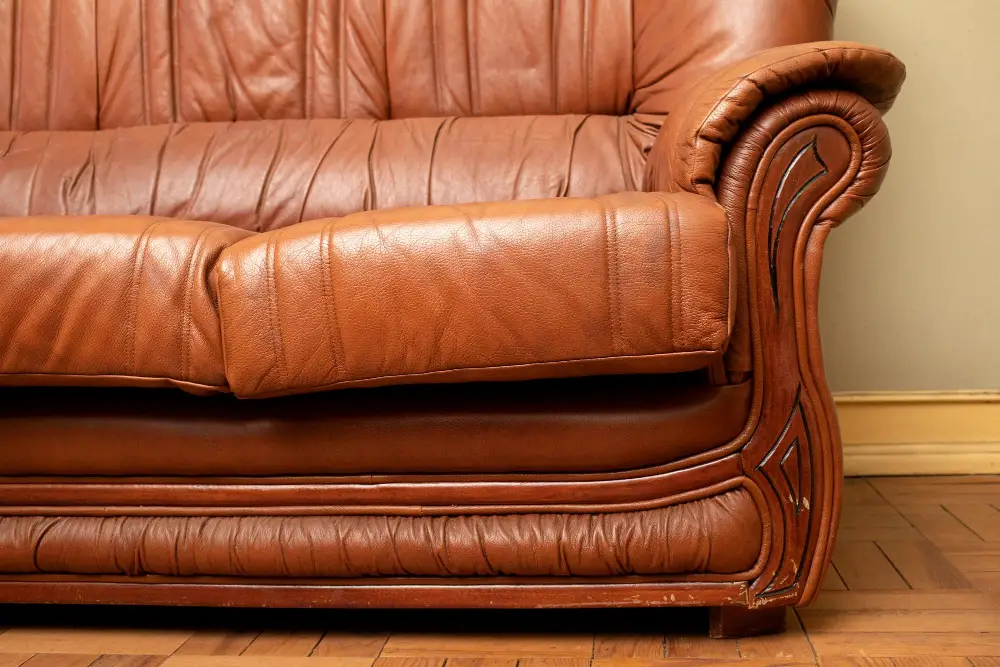
One of the most obvious signs that it’s time to replace your couch is wear and tear. Over time, even the highest quality sofas will start to show signs of aging.
The first thing you should look for is sagging cushions or a lumpy seat. If you find yourself sinking into your couch every time you sit down, it may be because the foam inside has lost its shape and support.
Another sign of wear and tear is frayed or torn upholstery fabric. This can happen due to regular use, pet scratches, or accidental spills that leave stubborn stains on your sofa’s surface.
If any part of your couch frame feels wobbly when touched or makes creaking noises when sat upon, this could indicate structural damage caused by years of use.
Impact of Material Types
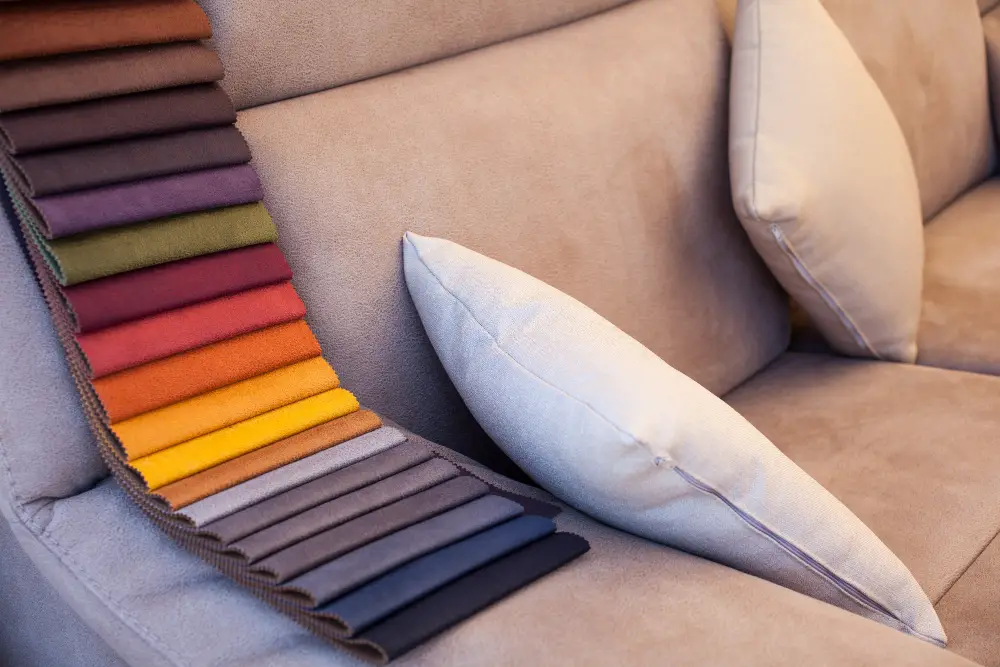
Leather and synthetic fabrics tend to last longer than natural fibers like cotton or linen, which are more prone to wear and tear. However, the durability of leather depends on the quality of the hide used and how well it’s maintained over time.
Synthetic materials like microfiber or polyester blends are also popular choices for their affordability, stain resistance, and ease of cleaning. They’re ideal for households with kids or pets that may cause spills or accidents.
On the other hand, natural fabrics offer a softer feel but require more maintenance to keep them looking good over time. Cotton can be prone to fading if exposed to sunlight while linen wrinkles easily but offers breathability in hot weather.
Assessing Cushion Lifespan

They provide support and cushioning for your body, making sure you don’t feel any pressure points or discomfort while sitting. However, over time, the cushions can lose their shape and become less supportive.
To assess whether it’s time to replace your couch cushions, there are a few things you can do:
1. Check for sagging: If the cushions have lost their firmness and started sagging in places where people usually sit on them, then they need replacing.
2. Look out for lumps: Lumpy or unevenly distributed filling is another sign that indicates worn-out sofa seats.
3. Test its resilience: Press down on each cushion with both hands; if they take too long to regain their original shape after releasing pressure from them (more than 5 seconds), then it’s probably time to replace them.
Replacing just the seat foam inserts may be an option if only one area has been affected by wear-and-tear but keep in mind that this will not fix other issues such as fabric damage or frame problems.
Frame Durability
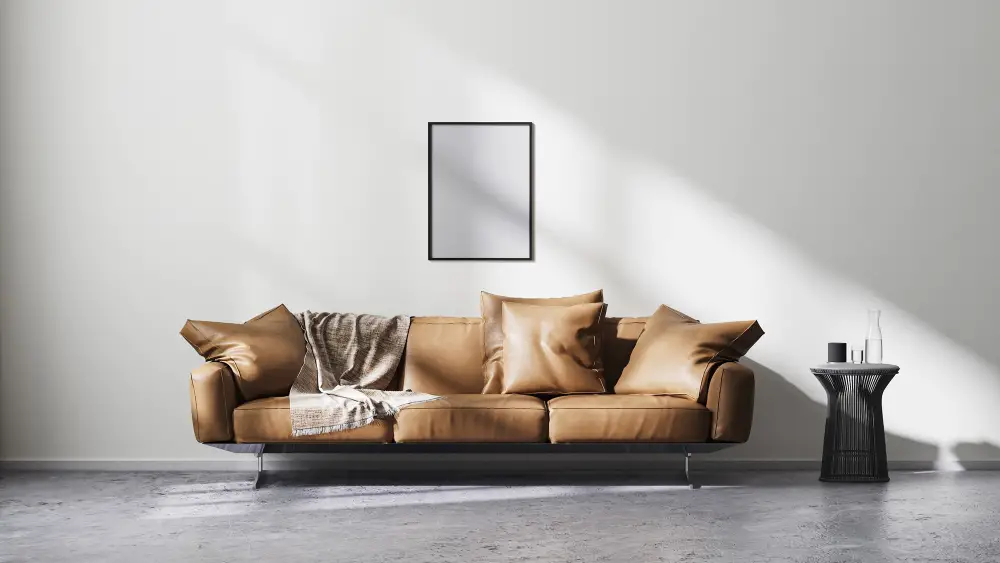
A sturdy frame made from high-quality materials can withstand years of use, while a weak or poorly constructed one may break down quickly. When shopping for a new couch, pay attention to the type of wood used in the frame (hardwood is preferable), as well as any metal reinforcements or joints that add extra support.
You should also consider whether you want a sectional sofa with multiple pieces connected by brackets or individual pieces held together by screws and bolts.
A durable couch frame not only ensures longevity but also provides safety for you and your loved ones. A broken or unstable sofa can cause accidents such as falls, which could result in serious injuries.
In addition to choosing a strong material for your couch’s framework, make sure it has been assembled correctly before purchasing it. Check if all parts are tightly secured without any wobbling when pressure is applied on them.
Allergen and Odor Buildup
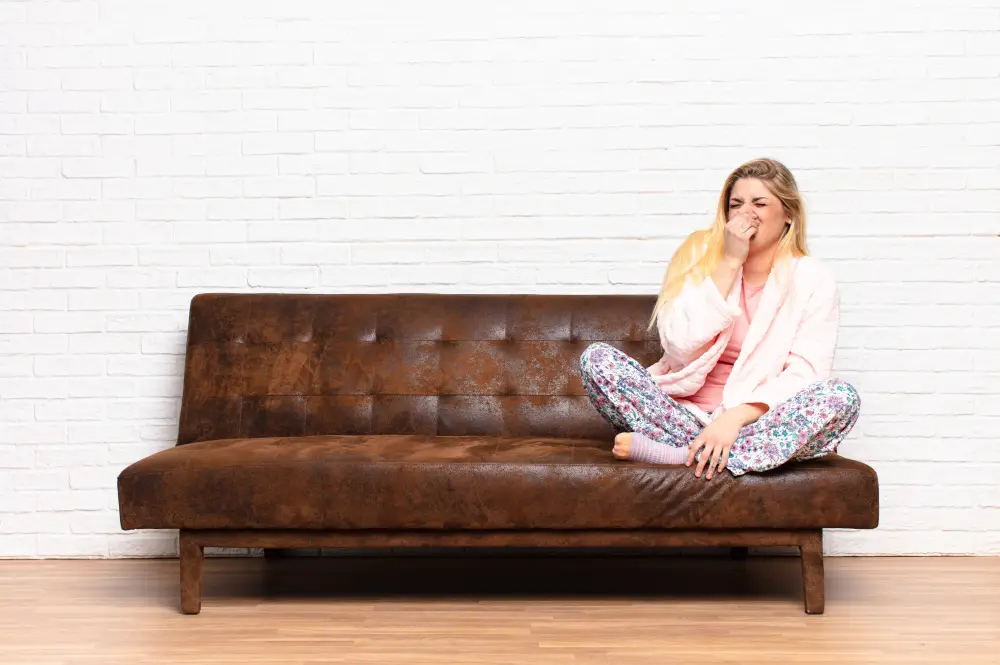
Over time, these particles accumulate in the fabric or cushions of your sofa and become difficult to remove with regular cleaning methods. If you have pets or kids who frequently use the couch as their playground (or eating spot), it’s likely that unpleasant odors will develop over time.
To prevent allergen buildup on your couch, consider investing in a hypoallergenic cover or using specialized cleaning products designed to eliminate dust mites and bacteria from upholstery surfaces. You may also want to vacuum your sofa regularly (at least once a week) using an attachment tool that can reach deep into crevices.
As for odor removal techniques: baking soda is one of the most effective natural remedies for neutralizing bad smells on furniture fabrics. Simply sprinkle some baking soda onto the surface of your couch (avoiding any leather parts) and let it sit overnight before vacuuming it off in the morning.
Pet and Kid Friendly Options

From scratches to spills, it’s essential to choose a durable and easy-to-clean material that can withstand the demands of daily use. Leather is an excellent option for pet owners as it resists stains and scratches while being easy to clean with a damp cloth.
However, if you prefer fabric upholstery, look for materials such as microfiber or Crypton that are stain-resistant and repel moisture.
Another consideration when choosing a kid-friendly couch is safety. Avoid sharp edges or exposed metal parts that could cause injury in case of accidental falls or bumps.
Consider investing in slipcovers if you want extra protection against spills and stains from pets or children. Slipcovers are removable covers made from washable fabrics such as cotton duck canvas that fit snugly over your sofa without compromising its style.
When shopping for pet- and kid-friendly options:
- Choose leather upholstery (or stain-resistant fabric)
- Look out for sharp edges
- Consider using slipcovers
Fabric Versus Leather
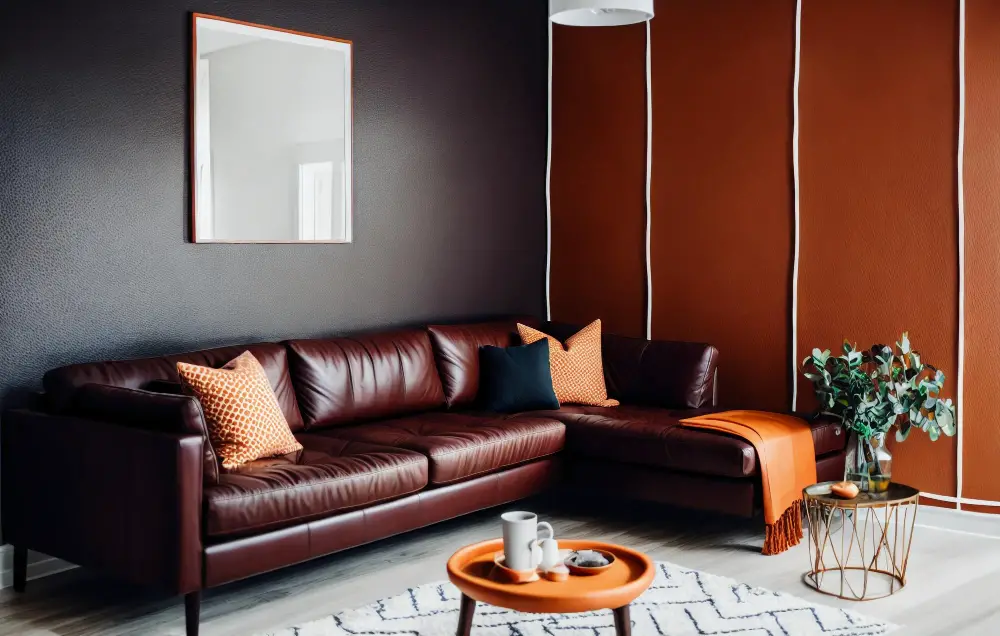
Fabric is generally more affordable, easier to clean, and offers a wider range of colors and patterns. It’s also less prone to scratches or punctures from pets’ claws or sharp objects.
On the other hand, leather is more durable in the long run as it ages well with time while maintaining its shape. Leather couches can be easily cleaned with a damp cloth without worrying about stains seeping into the material like they would on fabric upholstery.
Ultimately your choice will depend on your personal preferences regarding style, comfort level desired for seating surfaces (leather tends towards being firmer), budget constraints as well as any allergies you may have that could be triggered by either material type.
Couch Hygiene Factors
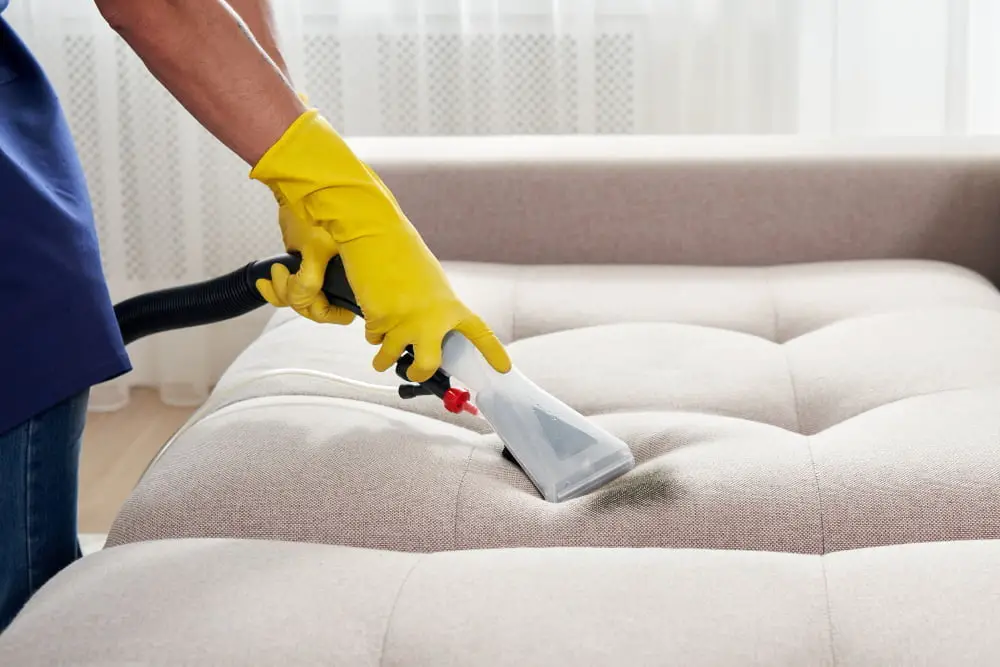
Over time, these particles accumulate in the fabric or leather upholstery and can cause respiratory problems or skin irritation. Regular cleaning of your couch is essential to maintain hygiene standards in your living space.
Vacuuming your sofa weekly with an upholstery attachment can help remove dirt and debris from the surface. You should also consider using a steam cleaner every six months to sanitize it thoroughly.
If you have pets at home, their fur may stick to the fabric fibers of your couch even after vacuuming. In such cases, you may want to invest in pet-friendly covers that are easy-to-clean or opt for leather furniture that doesn’t trap hair as easily.
Importance of Proper Maintenance
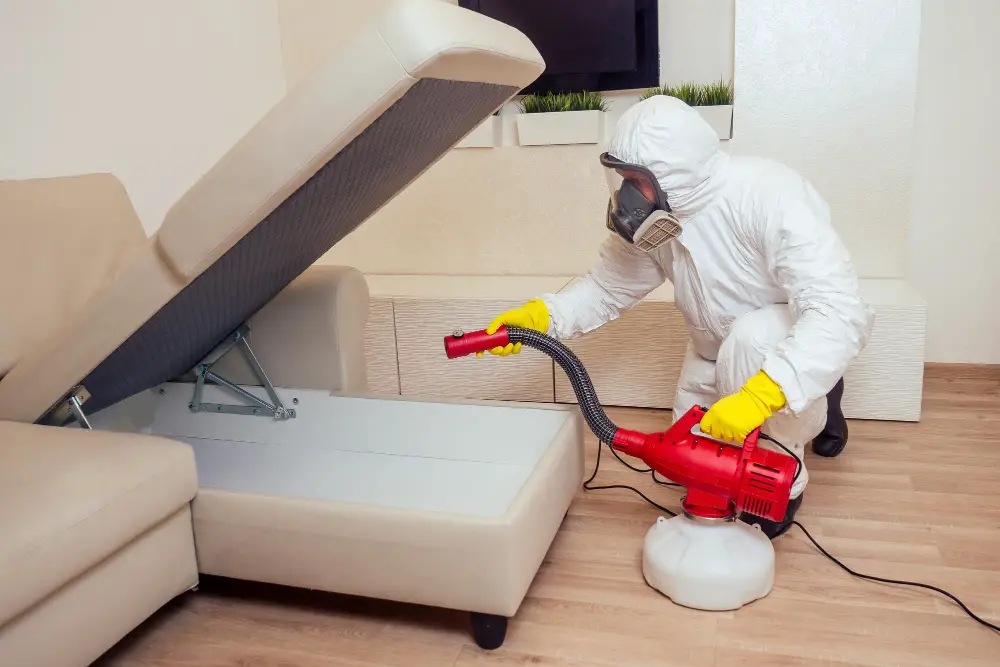
Regular cleaning and upkeep can prevent wear and tear, stains, and odors from setting in. Vacuuming your couch weekly with a soft brush attachment can remove dust, dirt, pet hair or dander that may accumulate over time.
Spot-cleaning spills immediately with a damp cloth or mild detergent solution can prevent them from becoming permanent stains.
In addition to regular cleaning practices at home, it’s also important to have professional deep-cleaning done every 12-18 months depending on usage frequency. Professional cleaners use specialized equipment that penetrates deep into the fibers of your couch fabric or leather material for thorough cleansing.
Another aspect of proper maintenance is ensuring that you’re using appropriate products for cleaning based on the type of material used in making your sofa – whether it’s leather upholstery or fabric cushions filled with foam padding.
Financial Considerations

A new sofa can be a significant investment, and you want to make sure that you’re getting the best value for your money. However, keep in mind that buying the cheapest option may not always be the most cost-effective solution in the long run.
Consider how much use your couch gets and how long you expect it to last before needing replacement again. Investing in a high-quality sofa with durable materials and construction may save you money over time by avoiding frequent replacements or repairs.
Another way to manage costs is by taking advantage of sales or discounts offered by furniture stores during certain times of year such as Black Friday or end-of-season clearance events. You can also consider purchasing from second-hand stores or online marketplaces where gently used sofas are available at lower prices.
Balancing Aesthetic and Comfort

While both factors are important, striking the right balance is key. Aesthetics play a significant role in interior design, but comfort should never be compromised for style alone.
Consider the primary use of your couch when making this decision. If you spend most of your time lounging on it while watching TV or reading books, then comfort should take precedence over aesthetics.
On the other hand, if you entertain guests frequently or want to make a statement with bold colors and patterns in your living room decor scheme – then aesthetic appeal might matter more.
Fortunately, there are plenty of options available that offer both style and comfort without sacrificing either factor entirely. You can choose from various designs such as sectional sofas with plush cushions or sleek leather recliners with modern lines.
Style and Interior Design Trends
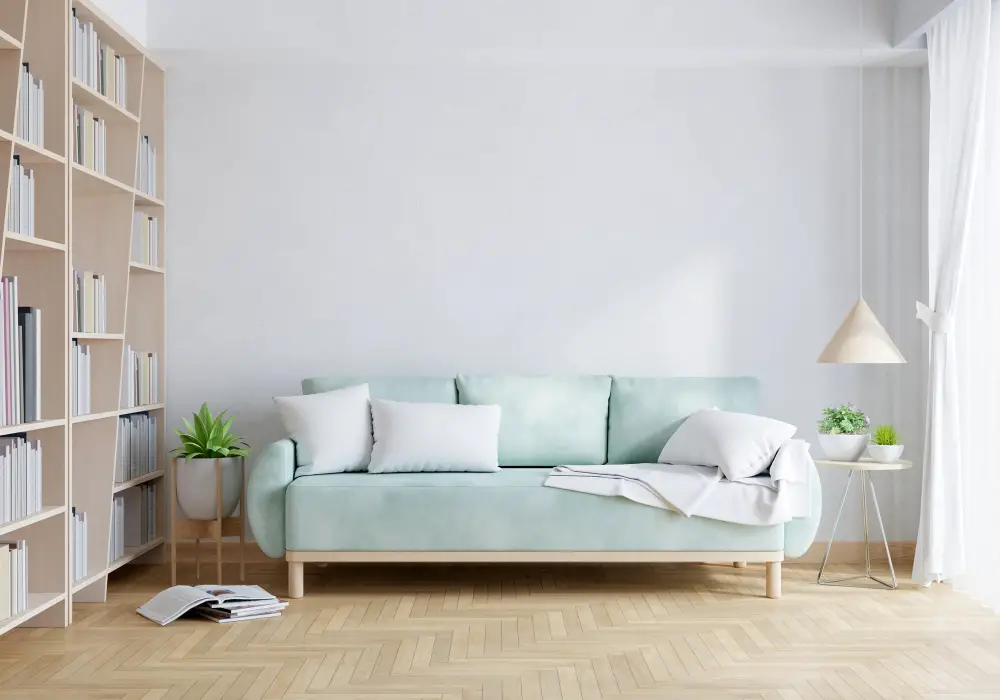
The style and design trends are constantly evolving, so you want to make sure that your new couch will complement the rest of your decor. For instance, if you have a minimalist living room with neutral colors and clean lines, then a bold-colored or patterned sofa might not be the best choice.
On the other hand, if you’re going for an eclectic look with lots of textures and prints in different hues, then a statement piece could be just what you need.
When choosing a new couch based on style trends alone can lead to regret later on when those styles become outdated quickly. It’s always better to choose something timeless that will last through changing fads while still fitting in well with current interior design aesthetics.
Future-proofing Your Purchase

One way of doing this is by future-proofing your purchase. This means considering factors such as the durability of the material, its resistance to stains and wear and tear, and how well it fits with your lifestyle.
For example, if you have kids or pets in the house who are likely to spill food or drinks on the couch regularly, then choosing a fabric that is easy-to-clean would be wise. Similarly, if you’re someone who likes changing up their interior design frequently but doesn’t want to replace their furniture every time they do so – opting for neutral colors or classic designs can help ensure longevity.
Another aspect of future-proofing involves thinking about how technology may impact our homes in the coming years. For instance: wireless charging pads built into armrests could become commonplace soon; therefore investing in a sofa with these features now could save money down-the-line when upgrading becomes necessary.
Warranty and Replacement Policies

Most furniture companies offer warranties that cover defects in materials or workmanship for a specific period after purchase. Some may also provide extended warranties at an additional cost.
It’s crucial to read through the terms of your warranty carefully before making your purchase, as they can vary significantly between brands. For example, some manufacturers may only cover repairs rather than replacements if there is damage to your couch.
You should inquire about their return policy in case you’re not satisfied with your purchase or need to exchange it for any reason. Many retailers have strict guidelines on returns and exchanges that could affect whether you get a full refund or store credit.
Upcycling or Reupholstery Options
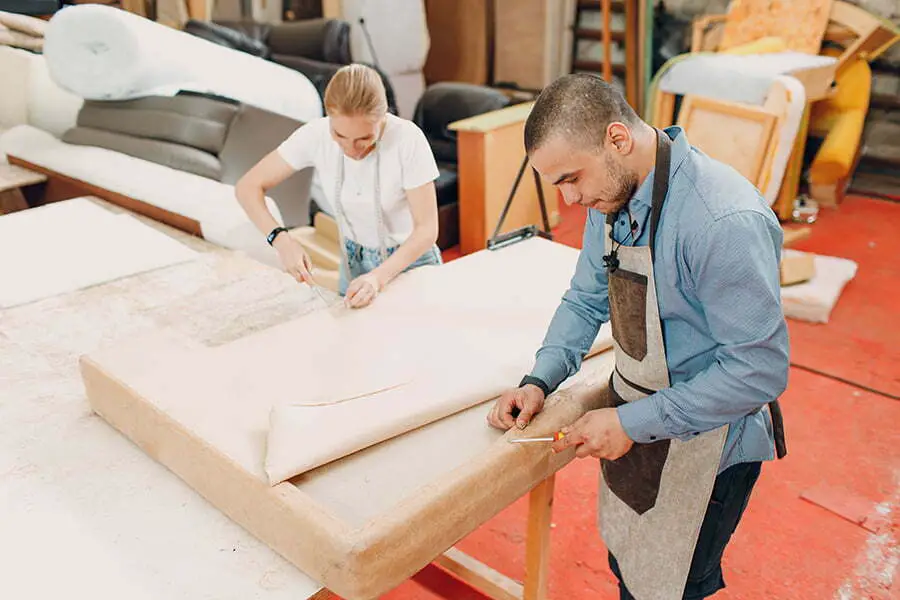
Upcycling involves transforming an old piece of furniture into something new and functional while reupholstery entails replacing the fabric on your existing couch with a fresh one. Both options can save you money and reduce environmental impact by keeping furniture out of landfills.
Upcycling requires some creativity and DIY skills, but it can result in unique pieces that reflect your personal style. You could turn an old sofa into a bench for your entryway or transform it into outdoor seating for summer barbecues.
Reupholstering is less labor-intensive than upcycling since you’re only changing the fabric covering on the couch’s cushions and frame. It’s also more affordable than buying a brand-new sofa if you have high-quality frames that are still sturdy enough.
Before deciding whether to upcycle or reupholster, consider factors such as cost-effectiveness versus time investment required for each option; availability of materials; skill level needed; desired outcome (e.g., modernizing outdated styles); durability requirements based on usage patterns (e.g., pets).
Responsible Disposal Methods

Throwing it in the trash is not an eco-friendly option and can contribute to landfill waste. Instead, consider responsible disposal methods that are both environmentally friendly and socially conscious.
One option is donating your couch to a local charity or non-profit organization that accepts furniture donations. This way, someone else can benefit from your gently used sofa while also reducing waste.
Another alternative is recycling the materials of your old couch through specialized companies that break down furniture components into recyclable parts such as metal frames or foam cushions.
If neither of these options works for you, check with local authorities on how best to dispose of bulky items like sofas in accordance with regulations and guidelines set by environmental agencies.
Considering Sustainability Factors

The furniture industry has a significant impact on the environment, from deforestation for wood materials to carbon emissions during manufacturing and transportation. By choosing eco-friendly options, you can reduce your carbon footprint and contribute towards a more sustainable future.
One way of doing this is by opting for couches made from recycled or upcycled materials such as reclaimed wood or repurposed fabrics. These options not only help reduce waste but also add unique character and charm to your living space.
Another option is selecting furniture brands that prioritize sustainability in their production processes. Look out for certifications such as Forest Stewardship Council (FSC) certification which ensures that the wood used in production comes from responsibly managed forests.
Consider donating or selling your old couch instead of throwing it away if it’s still in good condition. This reduces landfill waste while giving someone else the opportunity to enjoy its use before reaching its end-of-life cycle.
The Couch Doesn’t Fit the Room Space
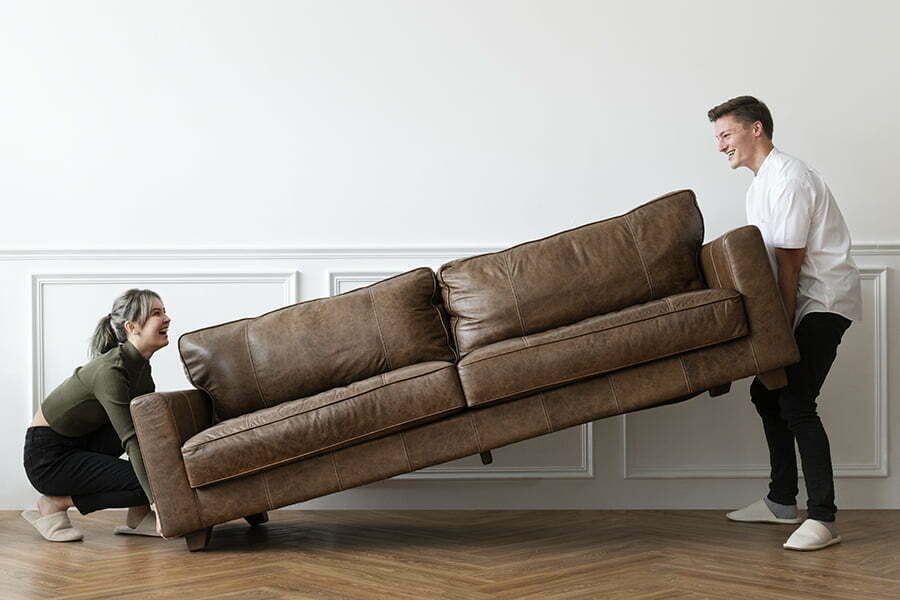
If you’ve recently moved into a new home or have decided to redecorate, you may find that your old couch no longer complements the space as well as it used to. Perhaps you’ve downsized and need a smaller sofa, or maybe you’re looking for something more modern and sleek.
Whatever the reason may be, choosing a new couch that fits perfectly in your living room can make all the difference when it comes to creating an inviting atmosphere. Before making any purchases, take measurements of both your current furniture layout and potential replacements so that you can ensure everything will fit comfortably without overcrowding.
Consider how much natural light enters through windows during different times of day since this could affect color choices for upholstery materials.
Effects of Pet Ownership On Couch Lifespan

While this can be great for bonding and relaxation, it can also take a toll on your furniture’s lifespan. Pets shed hair and dander that accumulate in the cushions and upholstery over time, leading to unpleasant odors and stains that are difficult to remove.
Pets may scratch or chew on the couch legs or arms when they’re feeling anxious or playful. This can cause irreparable damage to wooden frames or leather surfaces.
To mitigate these effects of pet ownership on your couch’s lifespan, consider investing in durable materials like microfiber fabric that resists scratches and stains. You could also opt for slipcovers that are easy to wash regularly without damaging the underlying cushioning.
Another option is training your pets not to jump onto furniture unless invited by using positive reinforcement techniques such as treats or toys as rewards for good behavior.
Impact of Usage Patterns On Couch Replacement

If your couch is in a high-traffic area, such as the living room or family room, and gets used daily by multiple people, it will wear out faster than a less frequently used one. Similarly, if you have kids or pets who love to jump on the sofa or spill food and drinks on it regularly, your couch’s lifespan may be shorter than expected.
On average, a well-maintained sofa can last anywhere from 7 to 15 years with regular usage. However, if you have an active household that spends most of their time lounging around in front of the TV or hosting guests over weekends and holidays – then expect to replace your furniture more frequently.
To extend its life span under heavy usage patterns consider investing in durable materials like leather which are easier to clean up spills from compared with fabric options that absorb stains quickly. You could also opt for slipcovers which protect against pet hair accumulation while adding style flexibility when changing decor themes without having to buy new furniture every time.
The impact of usage patterns cannot be ignored when considering replacing your old couch; therefore understanding how much traffic goes through this piece will help determine whether now is indeed time for an upgrade!
FAQ
How often do you replace couch?
On average, a couch should be replaced every 7 years, though a top-quality sofa may last up to 15 years before sagging.
Can a sofa last 20 years?
Yes, a sofa can last 20 years, especially if it has a solid wood frame, reinforced joinery, and genuine leather upholstery, although most sofas typically have a lifespan of around seven to 15 years.
How long should you keep a fabric sofa?
A fabric sofa can last anywhere from 5 to 15 years, depending on the quality of the fabric and construction.
How long does an expensive sofa last?
An expensive sofa, being high-quality, can last between 7-15 years, with longevity depending on factors such as frequency of relocation and traffic intensity.
What factors contribute to the deterioration of a couch’s condition over time?
Deterioration factors: usage frequency, weight, spills, sunlight exposure, humidity, pet damage, and cleaning methods.
How can regular maintenance and care prolong the lifespan of your sofa?
Regular maintenance and care, such as vacuuming, spot cleaning, and rotating cushions, can prolong the lifespan of your sofa by preventing dirt buildup and ensuring even wear on the material.
What are the signs that indicate it is time to replace your couch?
Signs indicating time to replace your couch include sagging cushions, worn out fabric, creaking noises, and decreased comfort.


